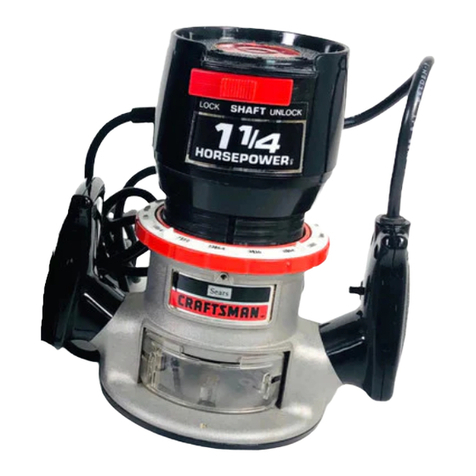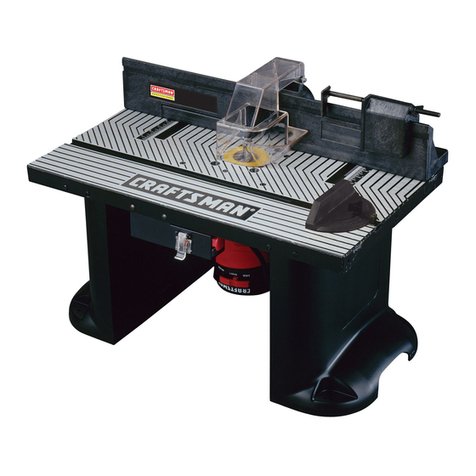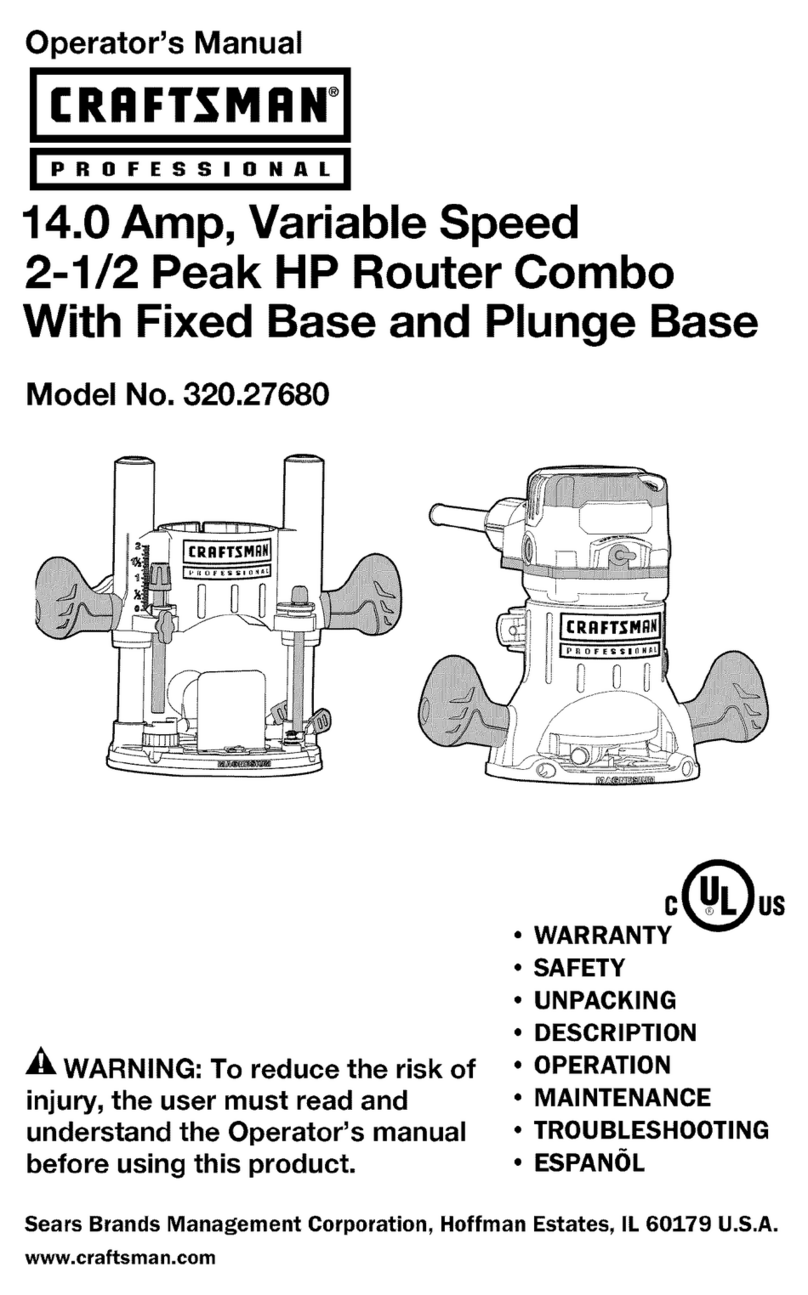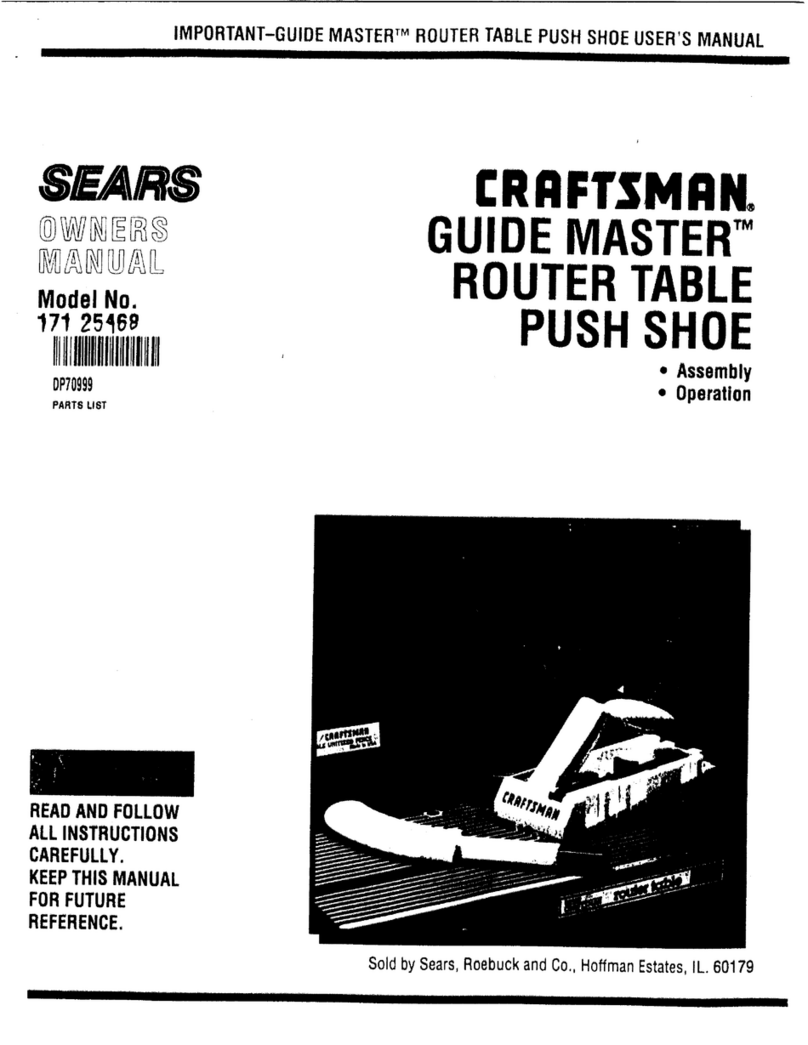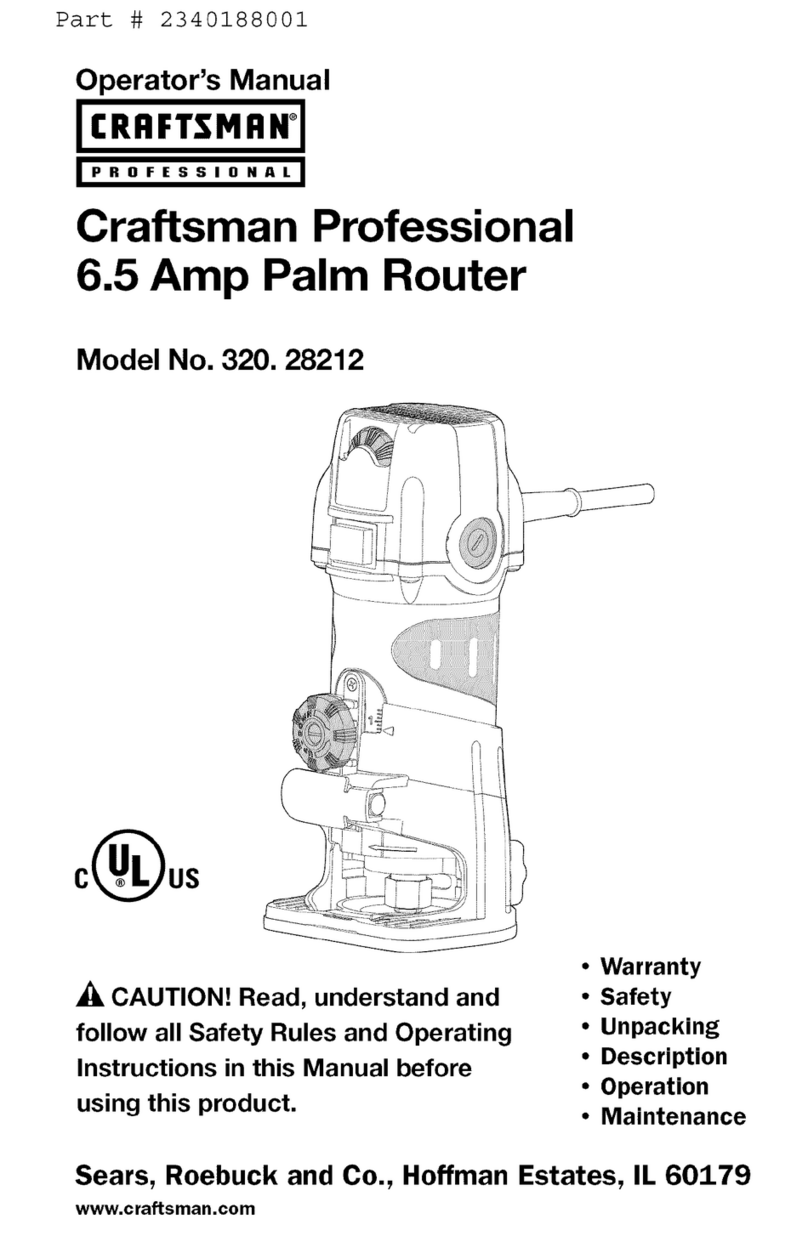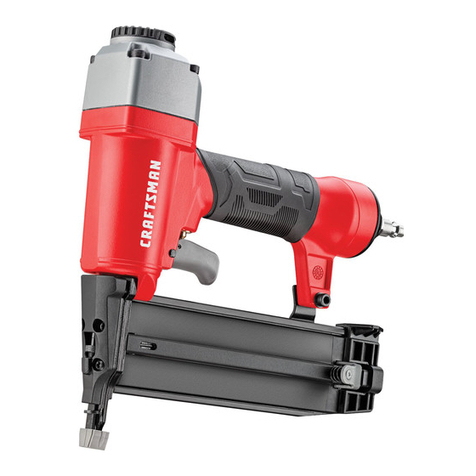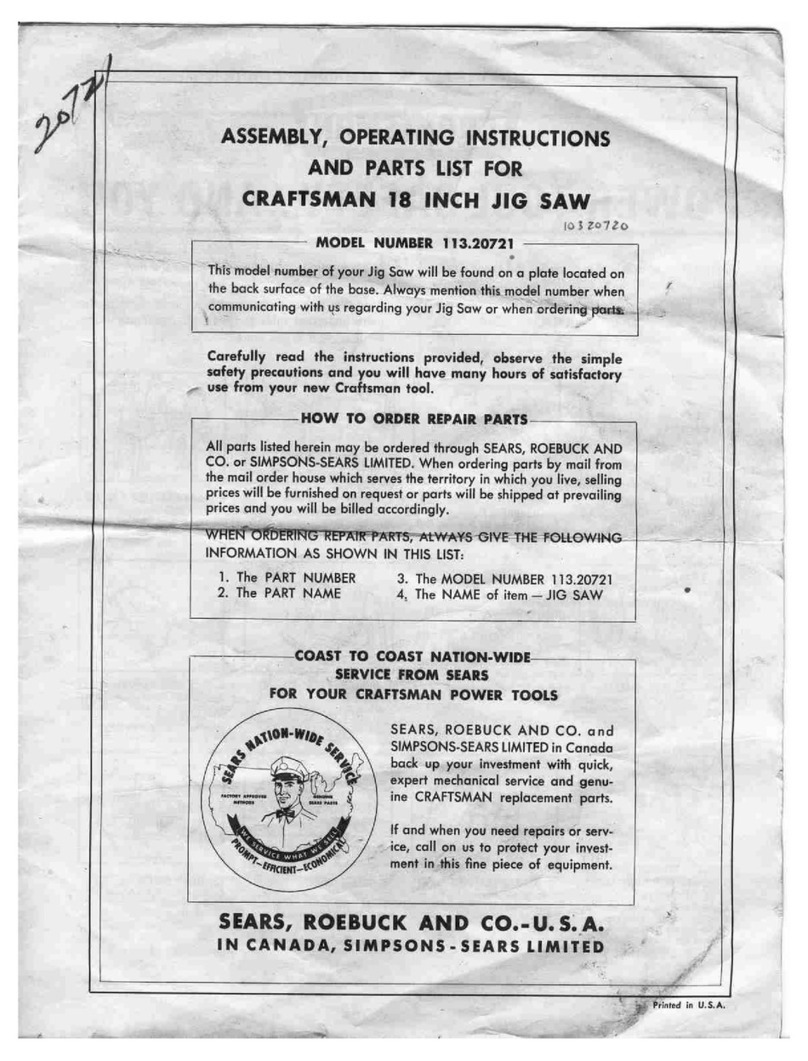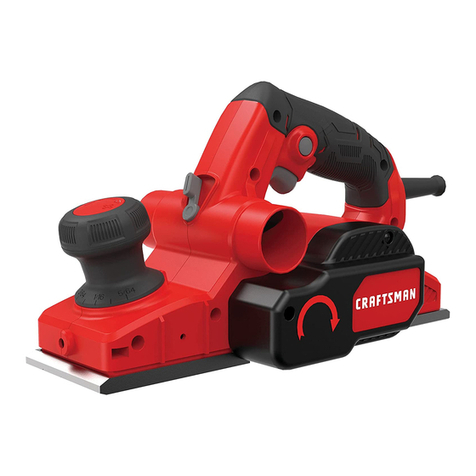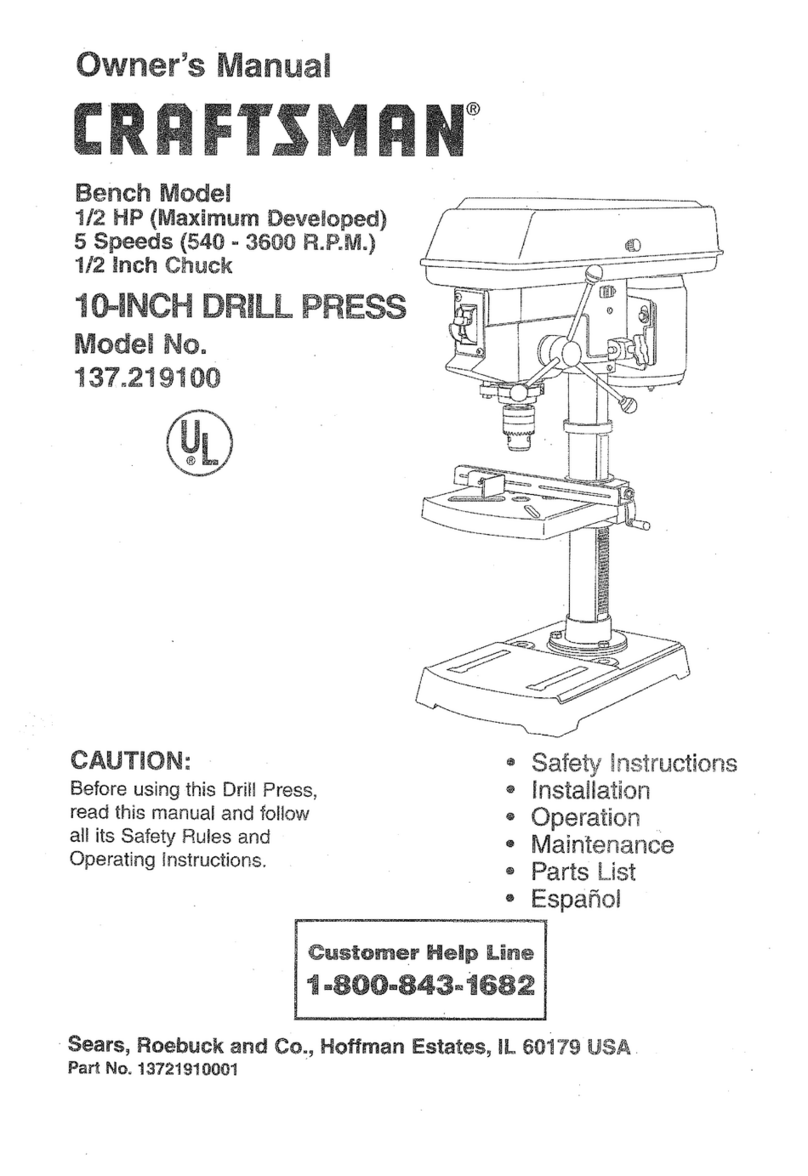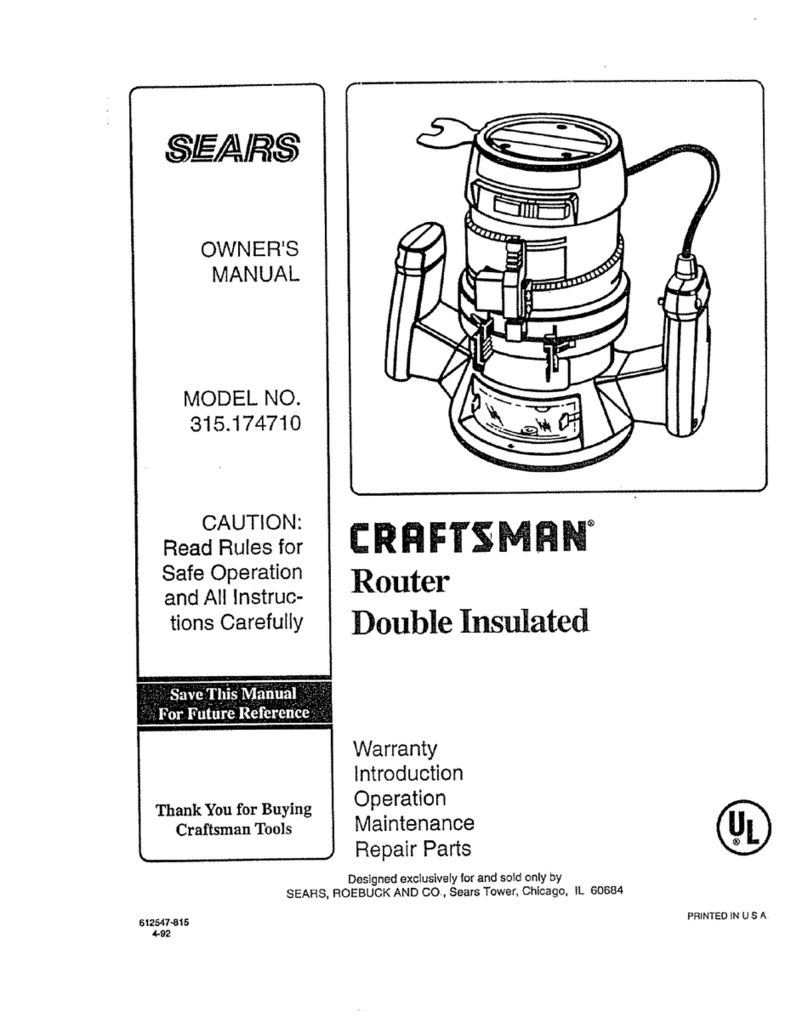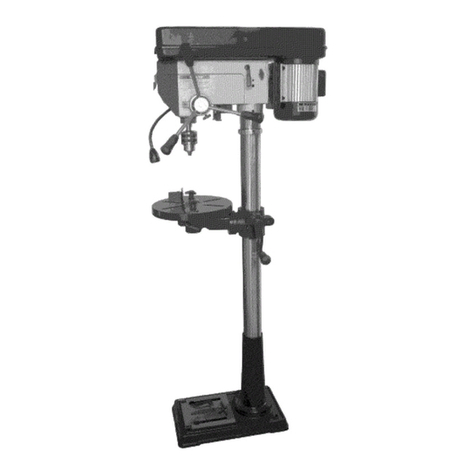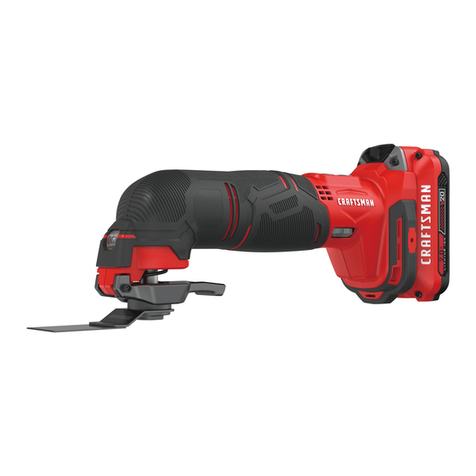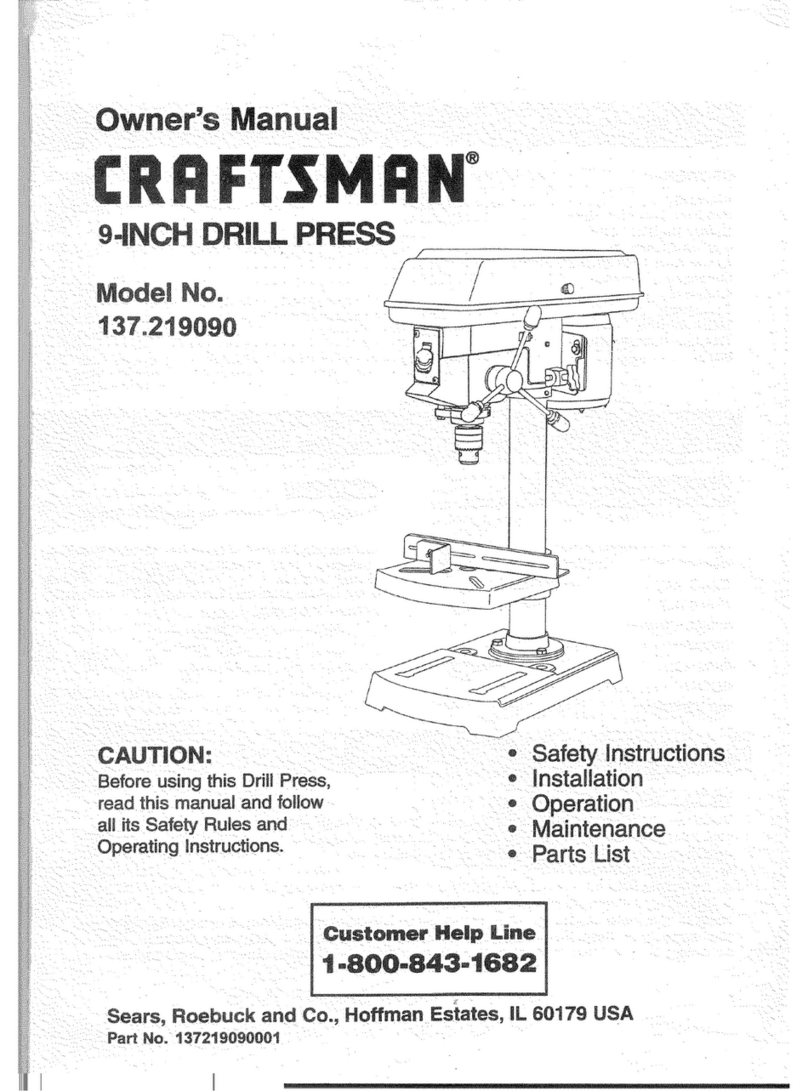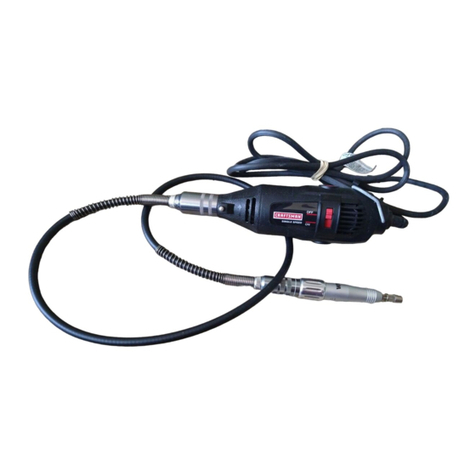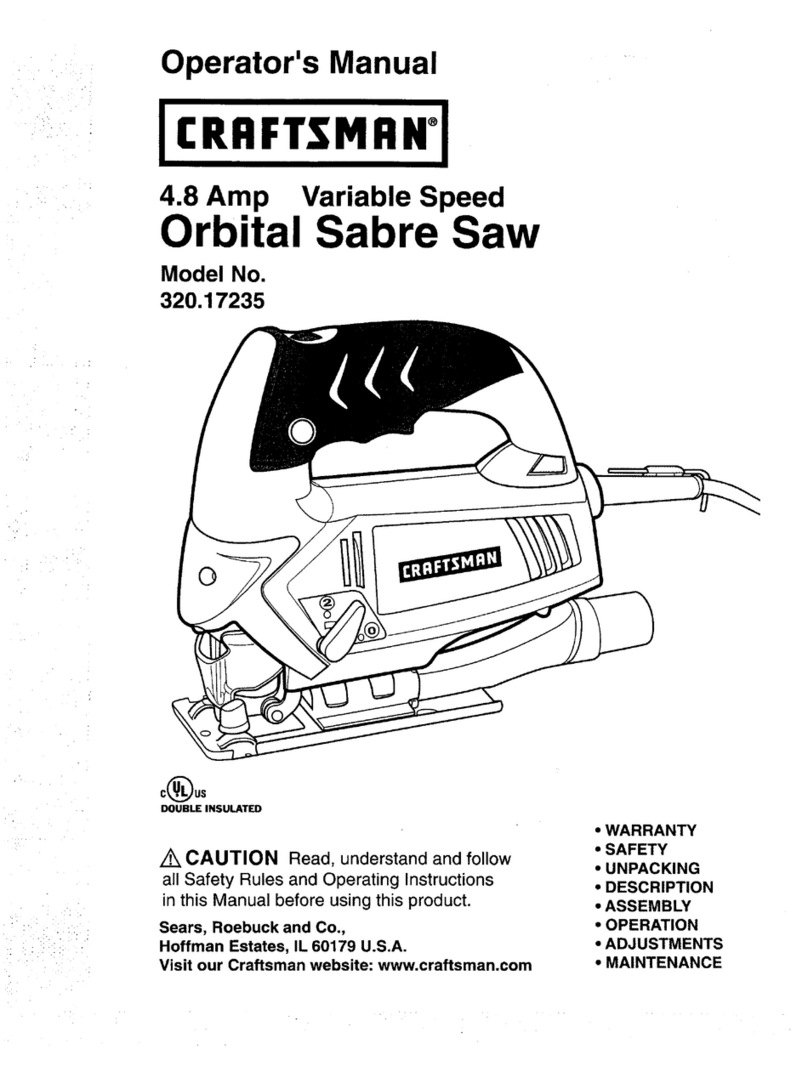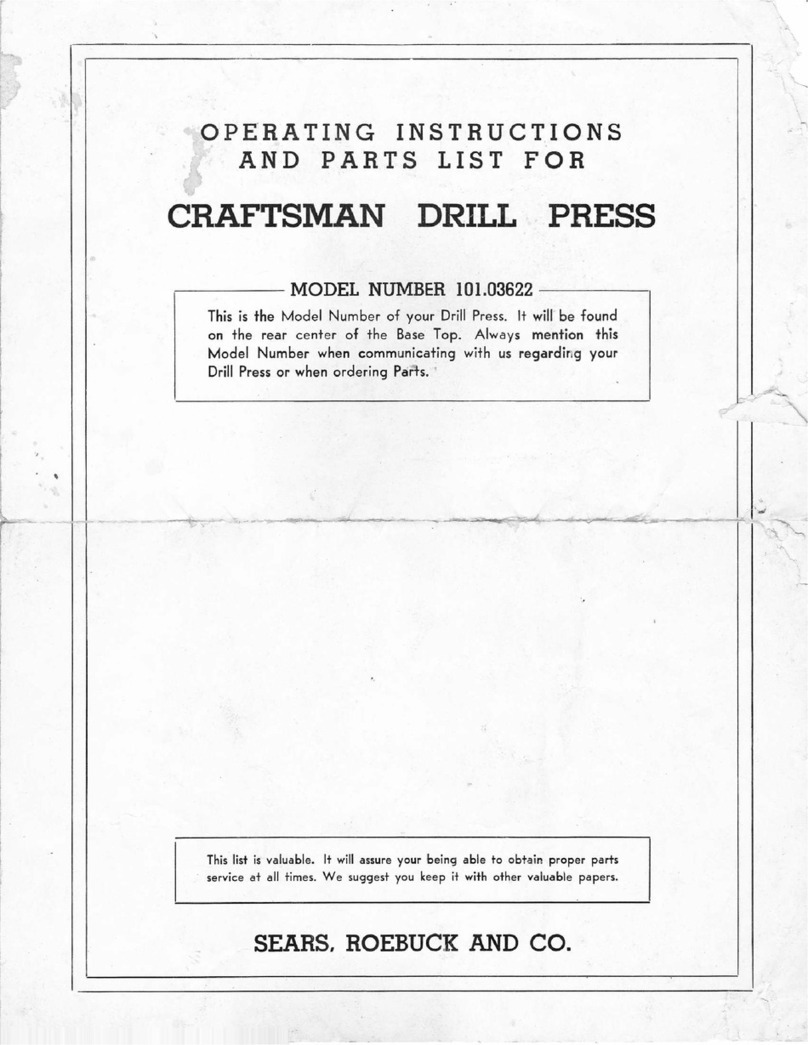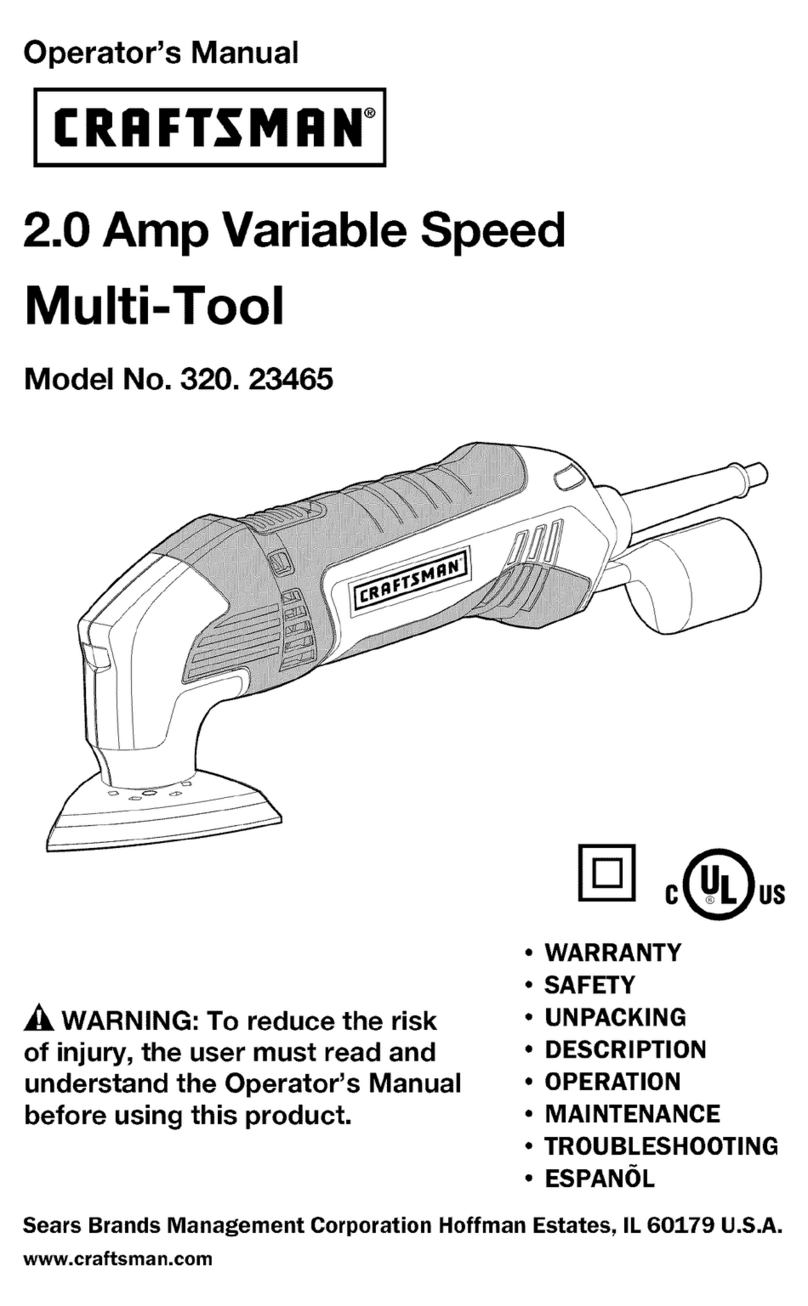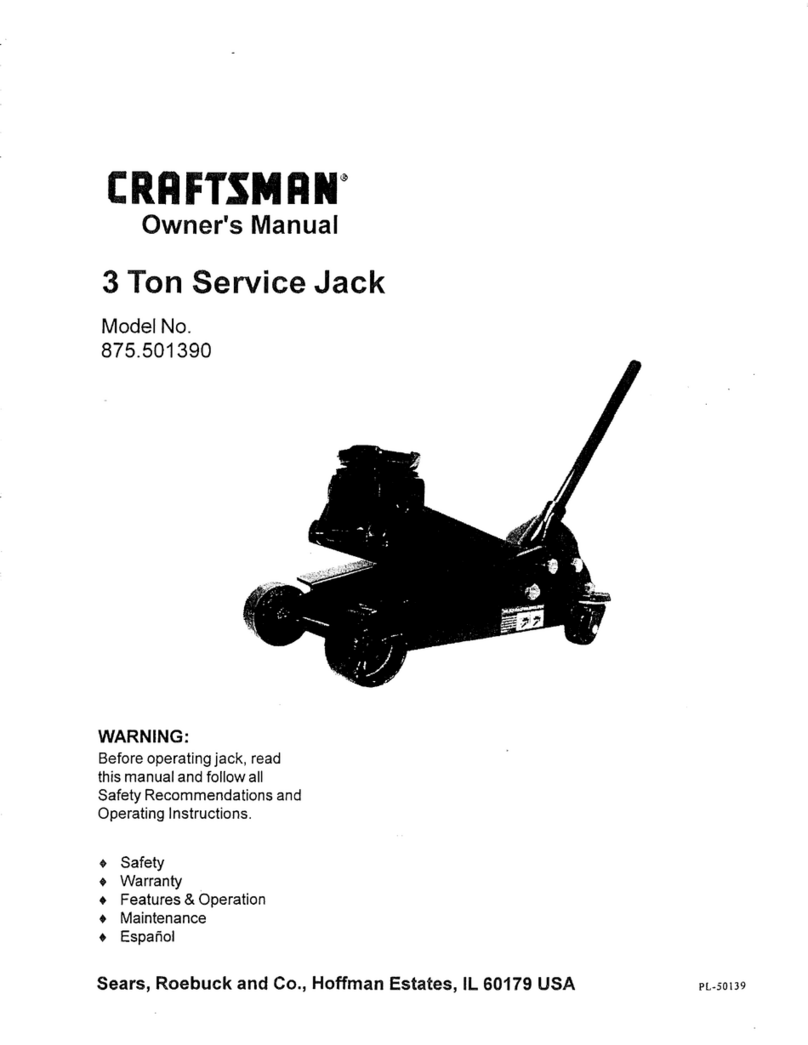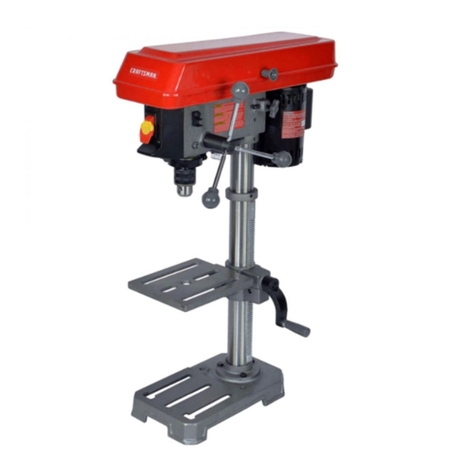RULES FOR SAFE OPERATION (Continued)
20. AVOID ACCIDENTAL STARTING. Don't carry
plugged-in tools with finger on switch. Be sure
switch is off when plugging in.
21. MAKE SURE YOUR EXTENSION CORD IS
IN GOOD CONDITION. When usinganextension
cord, be sureto useone heavy enough to carrythe
currentyour productwilldraw. An undersized cord
will cause a drop in line voltage resulting in loss of
power and overheating. Awire gage size (A.W.G.)
of at least 14 is recommended for an extension
cord 25 feet or less in length. A cord exceeding 25
feet isnot recommended. If in doubt, use the next
heavier gage. The smal_r the gage number, the
heavier the cord.
22. OUTDOOR USE EXTENSION CORDS. When
tool is used outdoors, use only extension cords
suitablefor use outdoors.Outdoor approved cords
are marked with the suffix W-A, for example -
SJTW-A or SJOW-A.
23. KEEP CUTTERS CLEAN AND SHARP.
Sharp cutters minimize stalling and kickback.
24. KEEP HANDS AWAY FROM CUTTING
AREA. Keep hands away from cutters. Do not
reach underneath work while cutter is rotating.
Do not attempt to remove material while cutter is
rotating.
25. NEVER USE IN AN EXPLOSIVE
ATMOSPHERE. Normal sparking of the motor
could ignite fumes.
26. INSPECT TOOL CORDS PERIODICALLY
and if damaged, have repaired at your nearest
Sears Repair Center. Stay constantly aware of
cord location.
27. INSPECT EXTENSION CORDS PERIODI-
CALLY and replace if damaged.
28. KEEP HANDLES DRY, CLEAN, AND FREE
FROM OIL AND GREASE. Always use aclean
clothwhen cleaning. Never usebrake fluids, gaso-
line, petroleum-based products or any strong sol-
vents to clean your tool.
29. STAY ALERT. Watch what you are doing and
use common sense. Do not operate tool when
you are tired. Do not rush.
30. CHECK DAMAGED PARTS. Before further
use of the tool, a guard or other part that is
damaged should be carefully checked to deter-
mine that it will operate properly and perform its
intended function. Check for alignment of moving
parts, binding of moving parts, breakage of parts,
mounting, and any other conditions that may af-
fect its operation. A guard or other part that is
damaged should be properly repaired or replaced
by an authorized service center unless indicated
elsewhere in this instruction manual.
31. DO NOT USE TOOL IF SWITCH DOES NOT
TURN IT ON AND OFF. Have defective
switches replaced by an authorized service cen-
ter.
32. INSPECT FOR and remove all nails from lumber
before routing.
33. DRUGS, ALCOHOL, MEDICATION. Do not
operate tool while under the influence of drugs,
alcohol, or any medication.
34. WHEN SERVICING USE ONLY IDENTICAL
CRAFTSMAN REPLACEMENT PARTS.
35. POLARIZED PLUGS. To reduce the risk of
electric shock, this tool has a polarized plug (one
blade iswider than the other). This plugwillfit in a
polarized outletonly one way. Ifthe plugdoes not
fit fully in the outlet, reverse the plug. If it stilldoes
not fit, contact a qualified electrician to installthe
proper outlet. Do not change the plugin any way.
36. DO NOT USE TOOL UNDER "BROWN-
OUT" OR OTHER LOW VOLTAGE CONDI-
TIONS. Also, do not use with any device that
could cause the power supplyvoltage to change.
37. WHEN USING THIS ROUTER WITH A
ROUTER TABLE, HELP PREVENT POS-
SIBLE SERIOUS INJURY BY KEEPING THE
CUTTER GUARDED AT ALL TIMES. Use
only router tables, with guards, that have been
designed for use on touters that are of this type,
size, and weight.
38. SAVE THESE INSTRUCTIONS. Review them
frequently and use them to instruct others who
may use this tool. If you loan someone this tool,
loan them these instructionsalso.
_t
WARNING:
Some dust created by power sanding, sawing, grinding,
drilling, and other construction activities contains
chemicals known to cause cancer, birth defects or
other reproductive harm. Some examples of these
chemicals are:
• lead from lead-based paints,
• crystalline silica from bricks and cement and other
masonry products, and
• arsenic and chromium from chemically-treated
lumber.
Your risk from these exposures varies, depending on
how often you do this type of work. To reduce your
exposure to these chemicals: work in a well ventilated
area, and work with approved safety equipment, such
as those dust masks that are specially designed to filter
out microscopic particles.
D_

